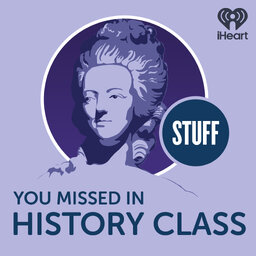Vietnam Draft Board Raids, Part 1
The draft board raids were part of an antiwar movement, largely grounded in Catholic religious convictions, that spanned almost four years. Part one covers the basic context of the Vietnam War and why the U.S. was involved in the first place, and the earliest raids on draft boards.
Research:
- "Statement: the Boston Eight" Newsletter. ULS Digital Collections. https://digital.library.pitt.edu/islandora/object/pitt%3A31735058194170
- “Draftees ‘Lost’ in Raids Immune for January.” Boston Globe. 12/10/1969.
- “Draftees ‘Lost’ in Raids Immune for January.” The Boston Globe. 12/10/1969.
- “Hardy Rites Tomorrow.” Camden Courier-Post. 10/4/1971.
- Arnold, Hillel. “Draft Board Raids.” https://hillelarnold.com/draft-board-raids/
- Associated Press. “Testify FBI Had Role in N.J. Break-in.” De Moines Register. 5/21/1973.
- Astor, Maggie. “Their Protest Helped End the Draft. 50 Years Later, It’s Still Controversial.” New York Times. 5/19/2018. https://www.nytimes.com/2018/05/19/us/catonsville-nine-anniversary.html
- Berrigan, Frida. “50 years later, the spirit of the Catonsville Nine lives on.” Waging Nonviolence. 5/16/2018. https://wagingnonviolence.org/2018/05/catonsville-nine-50-years-later/
- Cassie, Ron. “Trial by Fire.” Baltimore. May 2018. https://www.baltimoremagazine.com/section/historypolitics/50-years-ago-catonsville-nine-sparked-national-wave-of-vietnam-war-resistance/
- Dear, John. “The Camden 28.” National Catholic Reporter. 9/18/2007. https://www.ncronline.org/blogs/road-peace/camden-28
- Enoch Pratt Free Library. “Fire and Faith: The Cantonville Nine File.” 2005. http://c9.digitalmaryland.org/
- Fisher, James T. “Debating 'The Camden 28': A scholar and an activist discuss a new film about the Catholic Left.” America: The Jesuit Review. 9/17/2007. https://www.americamagazine.org/issue/625/100/debating-camden-28
- Fisher, James T. “Debating 'The Camden 28': Activist nuns, punk rock and the demise of the Catholic Left.” America: The Jesuit Review. 9/17/2007. https://www.americamagazine.org/issue/625/100/debating-camden-28-0
- Friedman, Jason. “Draft Card Mutilation Act of 1965.” Free Speech Center. 7/2/2024. https://firstamendment.mtsu.edu/article/draft-card-mutilation-act-of-1965/
- Giacchino, Anthony, director. “Camden 28.” PBS Point of View. 2007.
- Gilette, Howard Jr. “Camden, New Jersey.” The Encyclopedia of Greater Philadelphia. https://philadelphiaencyclopedia.org/essays/camden-new-jersey/
- Greenberg, Kyrie. “Camden 28 revisit court where they were tried for ’71 break-in to protest Vietnam War.” WHYY. 12/6/2018. https://whyy.org/articles/camden-28-revisit-court-where-they-were-tried-for-71-break-in-to-protest-vietnam-war/
- Hammond, Linda C. “FBI Says Informer Was Paid $7500.” Courier-Post. 5/30/1973.
- Hardy, Robert. “Affidavit.” Via Camden28.org.
- Kroncke, Francis X. “RESISTANCE AS SACRAMENT.” http://www.minnesota8.net/Kroncke/essays/resistance.htm
- Lacy, Tim. “The Media Raiders: The FBI, Hoover, and the Catholic Left.” Society for U.S. Intellectual History. https://s-usih.org/2024/12/media-raiders-fbi-hoover-catholic-left/
- Milwaukee Journal Sentinel. “Photos: The Milwaukee 14 - a fiery '68 protest against the Vietnam War.” 9/20/2016. https://www.jsonline.com/picture-gallery/life/2016/09/20/photos-the-milwaukee-14---a-fiery-68-protest-against-the-vietnam-war/90517276/
- Mische, George. “Inattention to accuracy about 'Catonsville Nine' distorts history.” National Catholic Reporter. 5/17/2013. https://www.ncronline.org/news/justice/inattention-accuracy-about-catonsville-nine-distorts-history
- Nelson, Paul. "Minnesota Eight." MNopedia, Minnesota Historical Society. http://www.mnopedia.org/group/minnesota-eight
- Nelson, Paul. “The Minnesota Eight’s attempts to destroy draft files during the Vietnam War were mostly unsuccessful.” MNopedia via MinnPost. 6/15/2020. https://www.minnpost.com/mnopedia/2020/06/the-minnesota-eights-attempts-to-destroy-draft-files-during-the-vietnam-war-were-mostly-unsuccessful/
- Nixon, Richard M. “The Great Silent Majority.” https://voicesofdemocracy.umd.edu/nixon-silent-majority-speech-text/
- Norland, Rod. “Camden 28 Trial Looks to Juror No. 10.” The Philadelphia Inquirer. 5/20/1973.
- O’Farrell, Sean. “Milwaukee Fourteen.” Encyclopedia of Milwaukee. https://emke.uwm.edu/entry/milwaukee-fourteen/
- Presbrey, Paul. “Draft Vandalism Willful? Jury Hears Father’s Beliefs.” Minneapolis Star. 12/2/1966.
- Roden, Renee. “Book paints the Camden 28 as 'Spiritual Criminals.' But were their actions effective?” National Catholic Reporter. 2/22/2025. https://www.ncronline.org/culture/book-reviews/book-paints-camden-28-spiritual-criminals-were-their-actions-effective
- Rothman, Lily. “This Photo Shows the Vietnam Draft-Card Burning That Started a Movement.” Time. 10/15/2015. https://time.com/4061835/david-miller-draft-card/
- Sadowski, Dennis. “After 50 years, draft board protesters insist what they did was right.” National Catholic Reporter. 9/1/2018. https://www.ncronline.org/news/after-50-years-draft-board-protesters-insist-what-they-did-was-right
- Silver, Maayan. “Member Of The Milwaukee 14 Reflects 50 Years After Draft Card Burning.” WUWM. 9/25/2018. https://www.wuwm.com/podcast/wuwm-news/2018-09-25/member-of-the-milwaukee-14-reflects-50-years-after-draft-card-burning
- Stanford University Libraries. “The Berrigans & the Catonsville Nine, 1968-1972.” https://exhibits.stanford.edu/fitch/browse/the-berrigans-the-catonsville-nine-1968-1972
- The Editors of Encyclopaedia Britannica. "Lyndon B. Johnson". Encyclopedia Britannica, 19 Mar. 2025, https://www.britannica.com/biography/Lyndon-B-Johnson. Accessed 20 March 2025.
- The Harvard Crimson. “Six Draft Boards Raided; Paint Thrown on Records.” 11/10/1969. https://www.thecrimson.com/article/1969/11/10/six-draft-boards-raided-paint-thrown/
- Walsh, Lori. “The Camden 28: Standing Against The Vietnam War.” SDPB. 9/8/2017. https://www.sdpb.org/margins/2017-09-08/the-camden-28-standing-against-the-vietnam-war
- Zinn Education Project. “Aug. 21, 1971: Anti-war Protesters Raid Draft Offices.” https://www.zinnedproject.org/news/tdih/anti-war-protesters-raid-offices/
- Zunes, Stephen and Jesse Laird. “The US Anti-Vietnam War Movement (1964-1973).” International Center on Nonviolent Conflict. January 2010. https://www.nonviolent-conflict.org/us-anti-vietnam-war-movement-1964-1973/
 Stuff You Missed in History Class
Stuff You Missed in History Class


